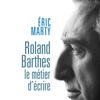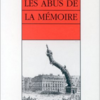On dit communément, pour évoquer une lecture frénétique et passionnée, qu'on avale ou qu'on dévore un livre. À l'âge classique, on appelle « nourriture » ce que nous appelons aujourd'hui éducation : c'est que les livres nourrissent autant l'esprit que les aliments restaurent le corps. Certains écrivains ont poussé l'amour des livres jusqu'à donner à cette image un sens littéral, et ont imaginé l’absorption du corpus par le corps dans des scènes où l'on ingurgite réellement des livres.
Au fil d'une série d'éloges de plus en plus enthousiastes, Mme de Sévigné somatise sa lecture des Essais de Morale de Nicole jusqu'à vouloir, après en avoir fait une médecine, en « faire un bouillon et l'avaler ». Dans les Lettres persanes (CXLIII), Montesquieu imagine une « pharmacie » comique conçue par un médecin de province qui se propose de soigner ses malades par l’absorption et le rejet de livres dont les pages sont réduites en tisanes, lénitifs, vomitifs et clystères.
L'étude de ces scènes montre qu'à travers ce jeu comique, se dessine non seulement l'essence du rapport de Mme de Sévigné et de Montesquieu aux belles-lettres mais aussi, en l'espace d'un demi-siècle (1671-1721), et dans le temps même de son élaboration, l'élection d'une certaine littérature, d'un corpus, qui correspond quasi exactement à ce que l'histoire littéraire élèvera, bien plus tard, à la dignité de « classique ».
Author Bio
Agrégé de lettres modernes, Nicolas Garroté prépare une thèse de doctorat sur Mme de Sévigné et enseigne la littérature française à l’Université Paul Valéry - Montpellier.







